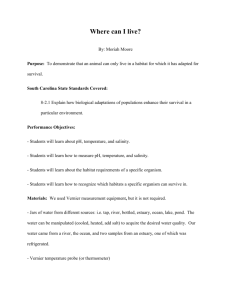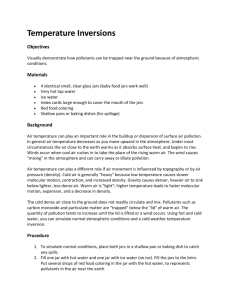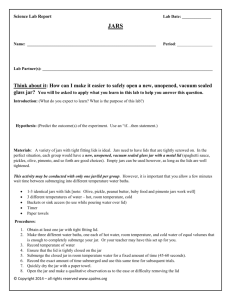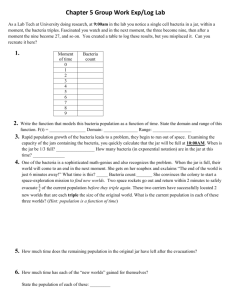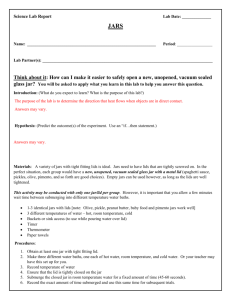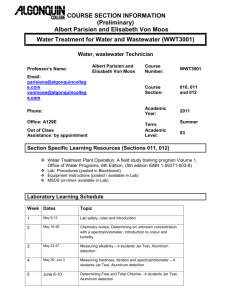C-17 Population Pressures and Succession
advertisement
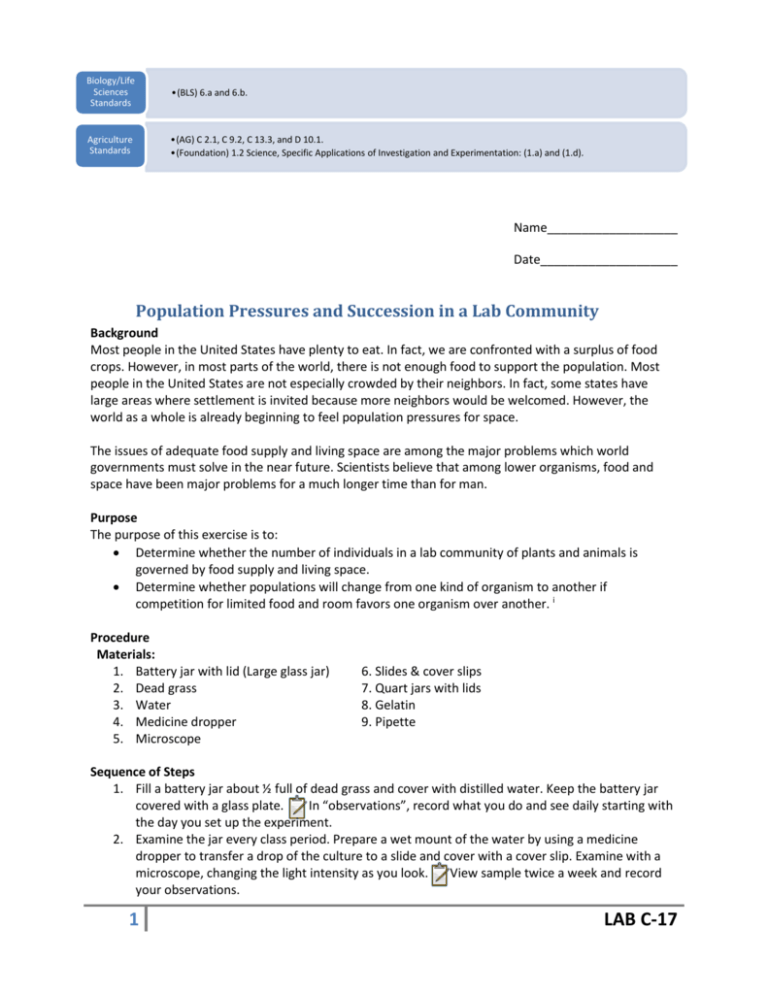
Biology/Life Sciences Standards •(BLS) 6.a and 6.b. Agriculture Standards •(AG) C 2.1, C 9.2, C 13.3, and D 10.1. •(Foundation) 1.2 Science, Specific Applications of Investigation and Experimentation: (1.a) and (1.d). Name___________________ Date____________________ Population Pressures and Succession in a Lab Community Background Most people in the United States have plenty to eat. In fact, we are confronted with a surplus of food crops. However, in most parts of the world, there is not enough food to support the population. Most people in the United States are not especially crowded by their neighbors. In fact, some states have large areas where settlement is invited because more neighbors would be welcomed. However, the world as a whole is already beginning to feel population pressures for space. The issues of adequate food supply and living space are among the major problems which world governments must solve in the near future. Scientists believe that among lower organisms, food and space have been major problems for a much longer time than for man. Purpose The purpose of this exercise is to: Determine whether the number of individuals in a lab community of plants and animals is governed by food supply and living space. Determine whether populations will change from one kind of organism to another if competition for limited food and room favors one organism over another. i Procedure Materials: 1. Battery jar with lid (Large glass jar) 2. Dead grass 3. Water 4. Medicine dropper 5. Microscope 6. Slides & cover slips 7. Quart jars with lids 8. Gelatin 9. Pipette Sequence of Steps 1. Fill a battery jar about ½ full of dead grass and cover with distilled water. Keep the battery jar covered with a glass plate. In “observations”, record what you do and see daily starting with the day you set up the experiment. 2. Examine the jar every class period. Prepare a wet mount of the water by using a medicine dropper to transfer a drop of the culture to a slide and cover with a cover slip. Examine with a microscope, changing the light intensity as you look. View sample twice a week and record your observations. 1 LAB C-17 3. At first you will only see bacteria, if anything at all. The next kind of organism to appear in the infusion will likely be an animal called a paramecium (see picture at right) or other ciliated protozoan. ii 4. When the paramecia become abundant, prepare 3 clean quart jars by putting 1 gram of plain gelatin in the first, 3 grams in the second, and 10 grams in the third. 1g Gelatin 3g Gelatin 10g Gelatin 5. Fill the jars with distilled water to an inch from the top and mix well. 6. Withdraw 30ml of liquid from the dead grass infusion. Agitate (shake) it to distribute the organisms evenly and add 10ml of the grass liquid to each gelatin jar. 7. You now have 3 jars with equal quantities of water, living space, bacteria and paramecia, but with different quantities of food (gelatin). 8. Your task: see how food supply affects the number of organisms in a controlled habitat. Observations 1. Stir the contents of each jar every day and examine a drop of liquid from each with a microscope. Record your observations below: Date What did you do? What did you see? 2. Count the number of organisms in each jar and compare. Record your observations below: Date 1g Gelatin Jar 3g Gelatin Jar 10g Gelatin Jar 2 LAB C-17 Conclusions: 1. What is the significance of seeing bacteria first in the water? Did a lot of bacteria appear suddenly or did their population increase gradually? 2. Did the number of paramecia increase suddenly or slowly? 3. How many days passed before you noticed any life in the grass infusion? How many days passed before the first organisms began to disappear? Would these be replaced by others? 4. Describe the biodiversity in your habitats (jars): 5. What comparison can you make between the relationships of food, bacteria and space for the organisms in your sample and human populations in crowded areas like China and India? 6. What comparisons can you make between this experiment and the demands our population places on California agriculture production? 7. Agriculture Application: Imagine you are a cattle rancher, grazing your cattle on a large pasture. What things must you consider related to population pressure to make sure your cattle are productive on this land? i ii Agricultural Biology Curriculum Lesson Plans. Sacramento: California State Department of Education, Agriculture Education Unit, 1990. "Paramecium Lab." Biology Corner. 3 Oct 2008 <www.biologycorner.com/resources/paramecium.gif>. 3 LAB C-17


